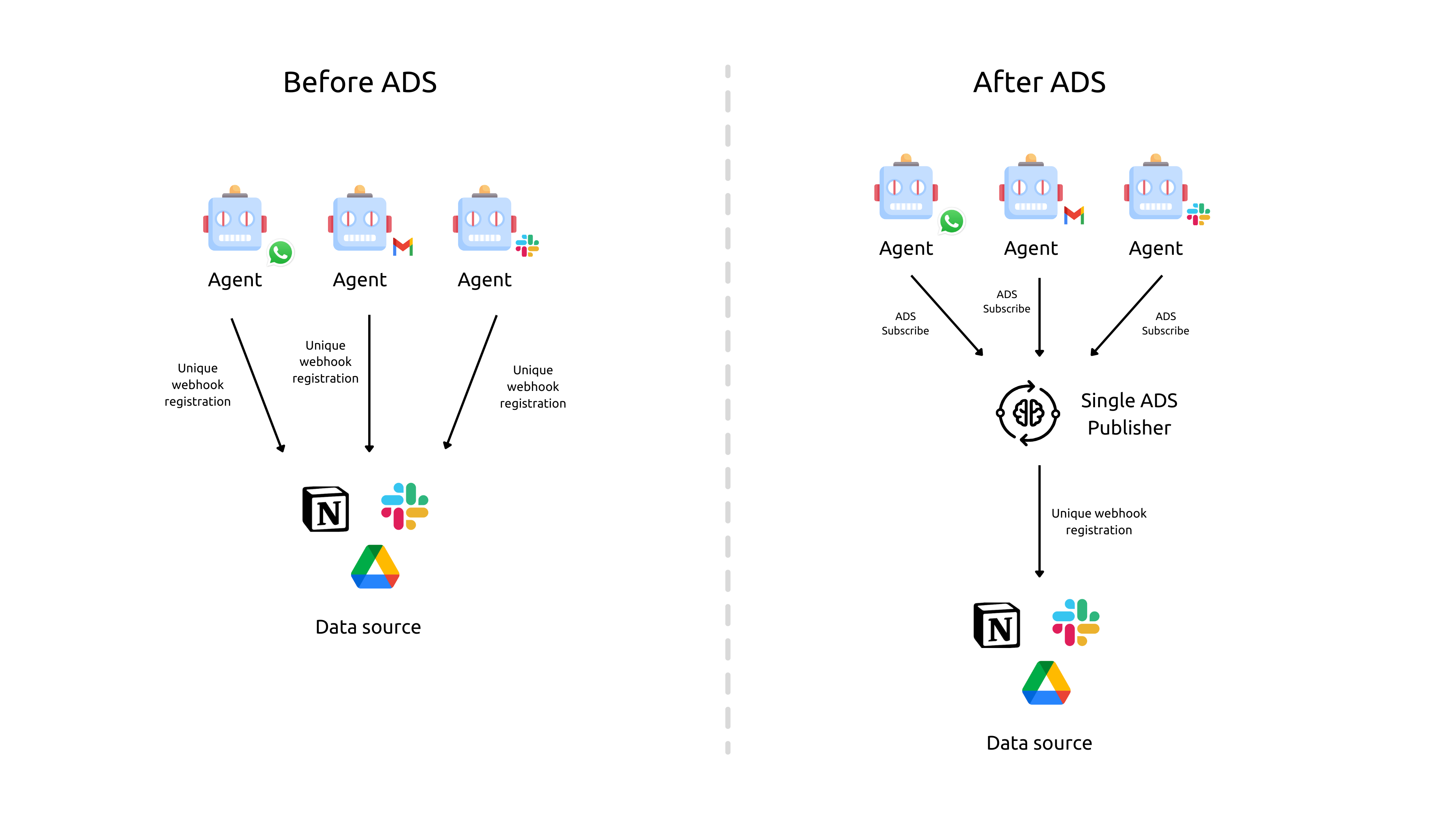Introduction
The Agent Data Shuttle (ADS) is an open-source framework that enables AI agents to automatically react to events from your applications and data sources.
Instead of manually triggering agents or setting up complex pipelines, ADS allows agents to respond instantly when something happens - like a new customer signup, support ticket creation, or payment failure, making your AI workflows truly autonomous and event-driven.
If MCP is “ask and receive”, ADS is “react when things happen”.
Why ADS?
ADS helps you build reactive AI agents, that respond automatically to real-world events, in no time.
AI agents often need to react to data changes and system events, and ADS provides:
- One-to-many event distribution that eliminates redundant webhook setups for multiple agents
- Cross-team scalability where any number of agents can subscribe to the same data sources seamlessly, and fulfil their distinct areas of expertise
- Built-in reporting to track autonomous agent invocations on Slack, email, and other channels
- Universal compatibility that allows any AI agent, whether programmatic, n8n, or otherwise to subscribe to the same ADS publisher eliminating redundancies and complexities.

Architecture
ADS consists of three main components that work together to enable reactive AI workflows.
- The ADS Publisher sends events from data sources to trigger AI agents
- The ADS Bridge manages ADS event distribution through a secure message queue
- ADS Subscribers are your AI agents that autonomously react to relevant events
This decoupled architecture ensures reliable event delivery while allowing unlimited agents to subscribe to the same data sources.
For a deeper dive into the architecture, see our Core Architecture documentation.
Scenario 1: External Data Source with Separate ADS Publisher Service
Scenario 2: Data Source with built-in ADS Publisher
Get Started
Choose the path that best fits your needs:
Quick Starts
Get your hands dirty and experience ADS in action with our quick start guides tailored for both publishers and subscribers.
Real world project examples
Explore real-world projects that demonstrate how to implement ADS in various scenarios, from simple data publishing to complex subscriber applications.
Learning Path
Check Prerequisites
Ensure you have the necessary tools and knowledge before starting implementation. View Prerequisites →
Install ADS
Set up the ADS development environment and tools. Installation Guide →
Choose Your SDK
Select the appropriate SDK for your programming language and platform. Browse SDKs →
Follow Quickstart
Build your first ADS publisher or subscriber with our step-by-step guides. Start Building →
Explore Concepts
Dive deeper into ADS core architecture and transport mechanisms. Learn Concepts →
Ready to dive in? Start with Prerequisites to set up your environment, or jump directly to Installation to begin implementing ADS.